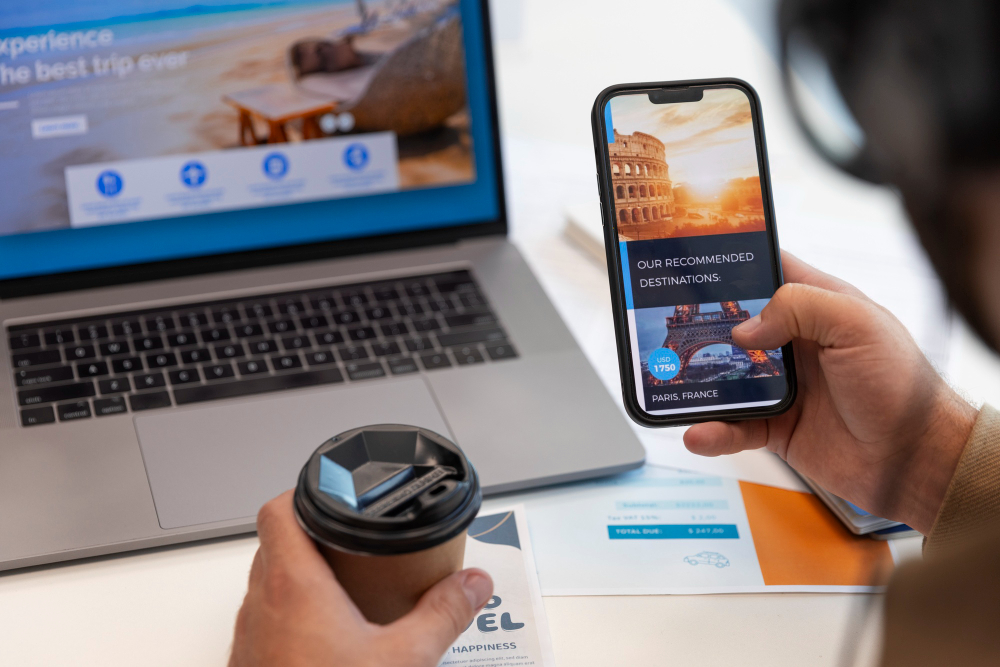
In today’s digital era, the way people access information and interact with brands has fundamentally changed. With the exponential rise in the use of smartphones and tablets, it is imperative for businesses to prioritize mobile-first website design. This approach is not just a trend but a necessity for staying competitive and relevant. This blog post delves into the importance of mobile-friendly designs, their impact on user engagement, and provides actionable tips for creating a seamless experience across devices.
The Significance of Mobile-First Design
Changing User Behaviors
The shift towards mobile internet usage is extraordinary. As of recent statistics, over 50% of global web traffic comes from mobile devices. This trend is only expected to grow, making it crucial for businesses to ensure their websites are optimized for mobile users. A mobile-first design prioritizes the mobile user experience (UX) right from the start, ensuring that the website performs well on any device, from small smartphones to large desktop monitors.
SEO Benefits
Search engine optimization (SEO) is vital for any business looking to increase its online visibility. Google, the dominant search engine, has made it clear that mobile-friendliness is a critical factor in its ranking algorithms. In fact, Google’s mobile-first indexing means that the search engine predominantly uses the mobile version of the content for indexing and ranking. Websites that are not mobile-friendly may find themselves plunging down the search results, thereby losing organic traffic and potential customers.
Enhanced User Experience
A mobile-first design ensures a smoother and more intuitive user experience. Mobile users typically have different needs and behavior patterns compared to desktop users. A well-designed mobile site provides effortless navigation, quick load times, and easy-to-read content, all of which contribute to increased user satisfaction. When users find it easy to interact with a website, they are more likely to stay longer, engage with the content, and ultimately convert.
Impact on User Engagement
Loading Speed
Speed is critical to user satisfaction. Studies have shown that 53% of mobile site visits are abandoned if pages take longer than three seconds to load. A mobile-first design naturally emphasizes optimizing loading speeds, which can significantly enhance user retention and engagement. Faster websites not only keep users happy but also improve conversion rates.
Accessibility and Convenience
Modern consumers expect instant access to information regardless of their location. A mobile-first design makes your content accessible on-the-go, catering to users who are constantly connected via their mobile devices. This convenience can lead to higher engagement rates as users can easily access and interact with your website anytime, anywhere.
Lower Bounce Rates
A poorly designed mobile site can lead to high bounce rates, where users quickly leave the site after viewing just one page. A mobile-first approach mitigates this by providing a user-friendly interface, clear call-to-actions, and responsive design elements that keep users engaged. Lower bounce rates often result in higher chances of user conversions, such as signing up for newsletters or making a purchase.

Tips for Creating a Seamless Experience Across Devices
Adopt a Responsive Design
Responsive design is the cornerstone of a mobile-first approach. It ensures that your website adapts seamlessly to different screen sizes and orientations. Utilizing flexible grids, layouts, and images allows your website to provide an optimal viewing experience across devices. Testing your design on various devices and screen resolutions during the development phase is crucial to achieving true responsiveness.
Prioritize Content for Mobile
When designing a mobile-first website, prioritizing content is essential. Mobile users often have limited screen space, so displaying the most critical information first is key. Implementing a content hierarchy ensures that users can quickly find what they are looking for. Keep the content concise, use bullet points, and avoid large blocks of text to maintain readability.
Simplify Navigation
Intuitive navigation is vital for a seamless mobile experience. A cluttered or complex navigation menu can frustrate users and increase bounce rates. Using a simple, hamburger-style menu and ensuring that links and buttons are easily tappable can significantly improve usability. Avoid using too many drop-down menus, as they can be challenging to navigate on smaller screens.
Optimize Images and Media
High-quality images and multimedia are essential for engaging users, but they can also slow down your website. Optimizing images and media files for mobile devices can help maintain fast loading speeds without compromising quality. Use image compression tools and ensure that videos are mobile-friendly. Also, consider using vector graphics like SVGs, which scale without loss of quality.
Implement Touch-Friendly Elements
Mobile users interact with websites through touchscreens, so it’s important to design touch-friendly elements. Make sure buttons and links are large enough to tap easily without zooming. Ensure there is enough spacing between clickable elements to prevent accidental taps. Design interactive elements with touch gestures in mind, such as swipe actions for navigating galleries.
Focus on Performance
Performance optimization is crucial for a successful mobile-first design. Use tools like Google PageSpeed Insights to analyze and improve your site’s performance. Techniques like lazy loading, where images and other media load only when they come into view, can help speed up your site. Minimizing JavaScript and CSS files, leveraging browser caching, and using content delivery networks (CDNs) are other effective strategies.
Use Mobile-First Frameworks
Leveraging mobile-first frameworks like Bootstrap or Foundation can streamline the development process. These frameworks come with pre-designed components and responsive grids that make it easier to create mobile-friendly websites. Using such frameworks can save time and ensure consistency in your design across different devices.
Test, Analyze, and Iterate
Finally, continuous testing, analyzing, and iterating on your design is crucial. Utilize tools like Google Analytics to monitor user behavior on different devices. Conduct usability testing to gather direct feedback from users. Based on the data and feedback, make necessary adjustments to improve the user experience continuously.
In today’s digital era, having a mobile-first website design is no longer optional—it’s essential. The significant shift in user behavior towards mobile browsing, the SEO benefits, and the enhanced user engagement all make a compelling case for adopting a mobile-first approach. By prioritizing mobile design, your business can provide a seamless, user-friendly experience across all devices, ensuring that you stay ahead in a competitive digital landscape.
Transform your website into a mobile-friendly powerhouse today! Contact Panda Marketing to learn how we can help you achieve a mobile-first design that drives results. Let’s make your website work for you!
Phone: 866.970.9727
Email: info@pandamarketing.net
Office: 2351 Crystal Dr. Unit 105 Ft. Myers, FL 33907

Comments are closed